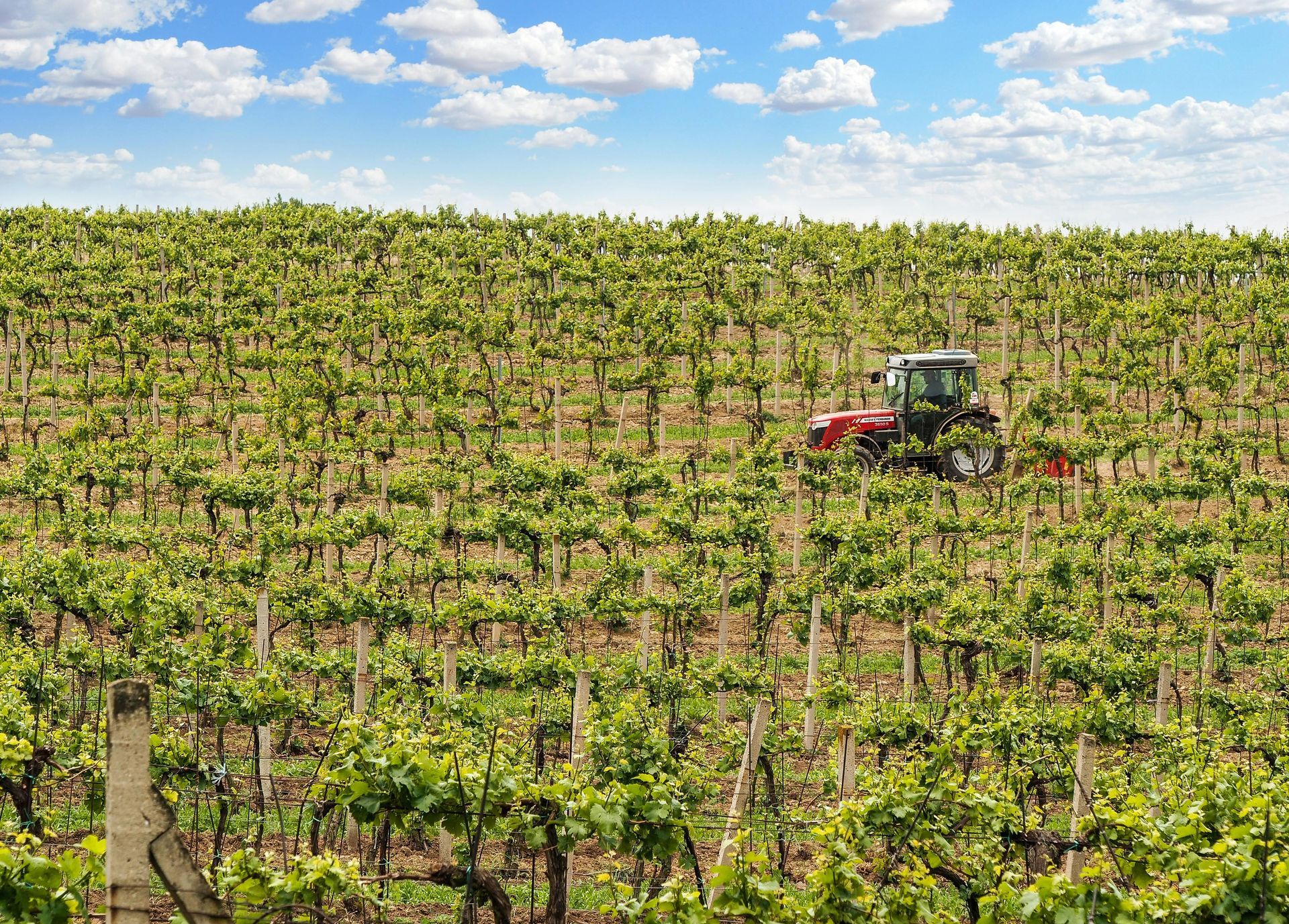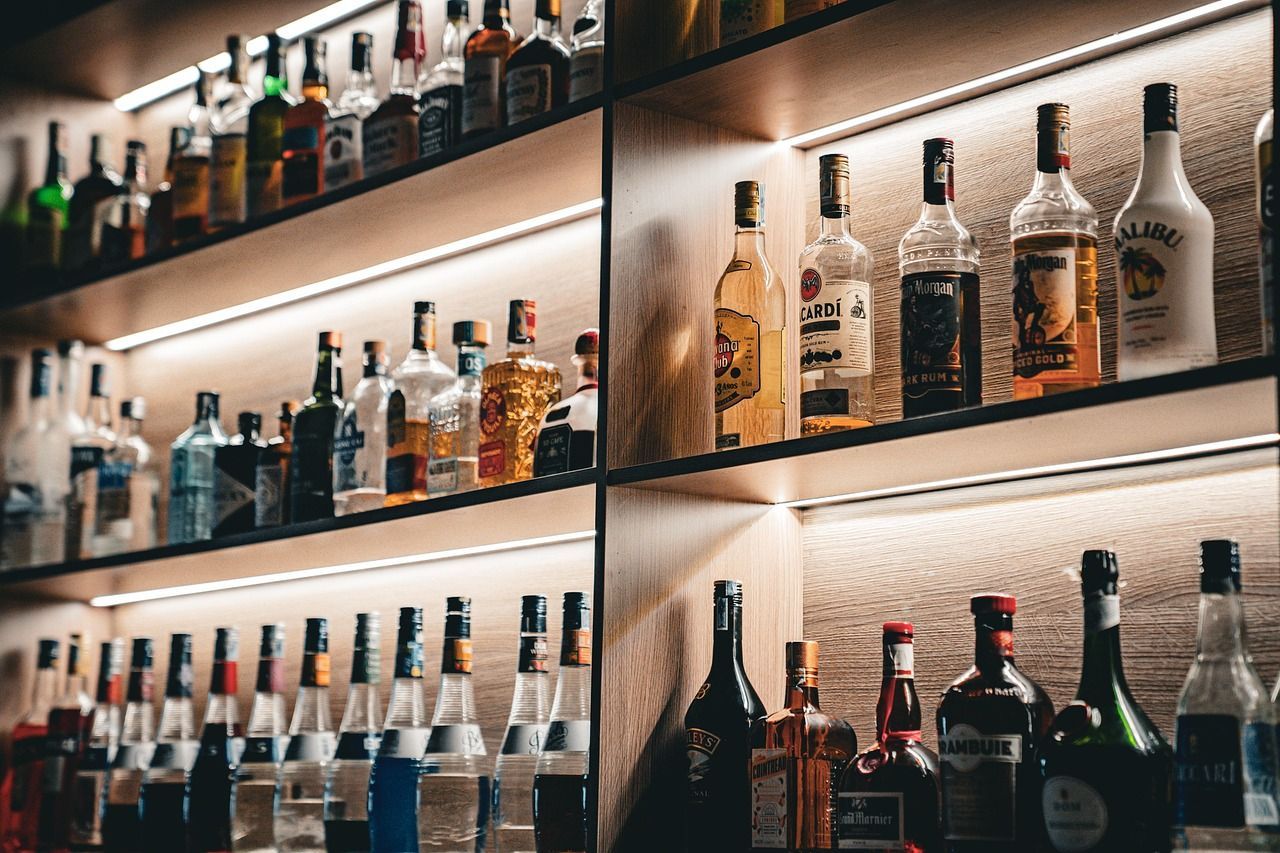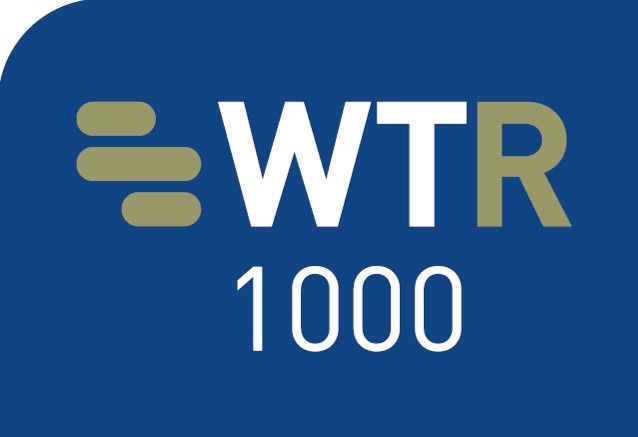Expanded Liability for Defective Products: The Evolving Concept of the “Producer” under EU Law
Aurilex • 15 July 2025
The CJEU broadens the notion of ‘producer,’ exposing distributors to liability alongside manufacturers.

Liability for defective products is a legal framework designed to compensate victims for damage caused by product defects, acting as a key consumer protection mechanism against producers.
At the heart of this regime lies the concept of the producer, which is crucial in determining who bears liability. Under European Directive 85/374/EEC, any producer is liable for damages resulting from a defective product, provided the harm stems from the defect. Article 3(1) of the Directive defines the producer broadly: it includes the manufacturer of a finished product, raw material, or component part, as well as any person who presents themselves as the producer by affixing their name, trademark, or other distinguishing sign to the product.
This notion of producer was recently clarified and broadened by the Court of Justice of the European Union (CJEU) in a judgment delivered on 19 December 2024, extending the scope of supplier responsibility under EU law.
The Case: Ford Italia SpA Before the Courts
The case involved the owner of a Ford vehicle who sued both Stracciari, the Italian dealer, and Ford Italia, the distributor, after an accident caused by the failure of the vehicle’s airbag to deploy — a failure attributed to a manufacturing defect. The vehicle in question had been produced by Ford WAG, a company established in Germany, and then supplied to Stracciari through Ford Italia, which distributes in Italy vehicles produced by Ford WAG.
Although both the court of first instance and the Bologna Court of Appeal found Ford Italia liable, the company appealed to the Italian Court of Cassation. Ford Italia argued that as a mere distributor, uninvolved in manufacturing, it should be exempt from liability — especially since the identity of the actual manufacturer was known. It further claimed that the lower courts had given an overly broad interpretation of the Directive.
The Italian Court of Cassation referred the matter to the CJEU, asking whether a distributor could be considered a producer even if it had not physically affixed its trademark to the product, particularly when the distributor’s name or trade name coincided wholly or partly with the manufacturer’s brand or another distinguishing sign.
The CJEU’s Ruling: A Broad Interpretation of “Producer”
The CJEU answered affirmatively, holding that the notion of producer under Article 3(1) is not limited to the manufacturer. It can extend to any person who presents themselves as a producer, whether explicitly (by affixing their name or brand) or implicitly, such as through the coincidence of trade names.
In this case, the Court found that the similarity between Ford Italia’s name and the Ford brand was sufficient to qualify the distributor as presenting itself as the producer, even in the absence of physical markings on the product.
Impact: Strengthened Consumer Protection and Expanded Supplier Liability
This ruling underscores the broad and consumer-protective approach of EU law. By treating distributors who share or use the producer’s brand as producers themselves, the Court eases the burden on consumers, who no longer need to precisely identify the manufacturer to claim compensation.
For distributors and suppliers, the decision serves as a warning: exploiting a shared or group brand can expose them to joint and several liability, effectively placing them on equal footing with manufacturers when it comes to defective product claims. This reinforces the need for careful brand management and greater vigilance within corporate groups.
Marco Mouchot, Trainee Lawyer
Christine Chai, Managing Partner, Attorney-at-Law

France’s 2019 PACTE law introduced new administrative procedures for trademark invalidity and revocation , which came into force on 1 April 2020. This reform was a cornerstone of the modernization of industrial property enforcement: it aimed to make trademark law more accessible, faster, and less costly. The objectives were clear: to give businesses, especially SMEs, the tools to defend their rights more efficiently, to clear the register of unused or abusive marks, and to prevent trademarks from unfairly blocking market access or harming the public interest. Five years later, the French IP Office (INPI) has published its assessment in the report “ Cinq ans déjà ! Les procédures de nullité et de déchéance des marques devant l’INPI ”. The results show a system that has been widely adopted and is now a stable part of the French trademark landscape. A Procedure Embraced by Businesses Since 2020, nearly 2,200 applications for invalidity or revocation have been filed before the INPI, with more than 1,800 decisions delivered. The a nnual average—around 440 cases —is well above the level seen before judicial courts prior to the reform. SMEs are major users of the system, filing over 35% of applications, while foreign companies have also relied heavily on it. On the defence side, 38% of respondents are SMEs and 37% are individuals. Although professional representation is not mandatory, almost 90% of applicants are assisted by counsel. Lawyers are present in 51% of cases, industrial property attorneys in 41%. Stable and Efficient Litigation Framework Applications are split between invalidity (60%) and revocation (40%) . Within invalidity, 70% are based on relative grounds such as earlier trademarks, while absolute grounds like lack of distinctiveness or bad faith remain less common. Bad faith is a notable trend : more than 150 decisions have been issued on this basis since 2020, with a success rate of around 50%. Fraudulent filings are alleged in over 20% of invalidity actions. For revocation, non-use remains the overwhelming ground , though around 30 cases have also concerned degeneration or deceptive use. Duration and Outcomes The average duration of proceedings is 8.5 months . Uncontested cases can be resolved in 7 months, while complex disputes may last up to 17 months. The results are decisive: in 85% of cases, applications are deemed justified . More than 1,000 trademarks have been annulled or revoked since 2020. Around 30% of cases are closed following amicable settlements, and only 3% end in inadmissibility. Relative grounds: Over 85% of prior trademark claims succeed , including claims based on well-known marks. Company names: Only half of claims succeed, while other signs (domain names, trade names) often fail due to lack of proof or legal basis. Absolute grounds: Just 30% succeed (excluding bad faith), often because of evidentiary challenges . The INPI also rules on costs: in over half of the cases, the losing party is ordered to pay, with an average cost award of €680. Conclusion: A Maturing and Trusted System Five years after its introduction, the administrative procedure for invalidity and revocation has reached maturity. The high level of adoption, particularly by SMEs, and the strong success rate of actions confirm its effectiveness. The INPI’s system has become a trusted and efficient alternative to judicial litigation— faster, less costly, and widely accessible . For businesses navigating trademark strategy in France, it is now an indispensable tool. Clara Courret, Trainee Lawyer Christine Chai, Managing Partner, Attorney-at-Law

On 25 June 2025, the General Court of the European Union delivered an important judgment in case T-239/23, annulling a decision of the EUIPO Board of Appeal and refusing registration of the EU trademark “ NERO CHAMPAGNE ” for wines and related services. This ruling strengthens the legal framework protecting Protected Designations of Origin (PDOs) , particularly the world-renowned Champagne . Background of the Case In 2019, Nero Lifestyle SRL (Italy) applied to register the word mark “NERO CHAMPAGNE” covering: Class 33: wines, Class 35: retail and advertising services, Class 41: educational and cultural activities. The application explicitly referenced wines compliant with the Champagne PDO specifications. The application was opposed by the Comité interprofessionnel du vin de Champagne (CIVC) and the Institut national de l’origine et de la qualité (INAO) under: Article 8(6) of Regulation (EU) 2017/1001 (EUTMR) , read with Article 103(2)(a)(ii) and (c) of Regulation (EU) 1308/2013 (agricultural product markets). These provisions prohibit both the exploitation and the misleading use of PDOs—even when the goods technically comply with PDO specifications. Initially, the EUIPO upheld the opposition in part, but the Board of Appeal allowed registration for wines conforming to the Champagne PDO and related services . CIVC and INAO challenged this before the General Court. The Court’s Key Findings 1. Misapplication of the “Limitation Theory” The Board of Appeal relied on internal EUIPO guidelines assuming that a trademark limited to PDO-compliant goods cannot exploit the PDO’s reputation. The Court rejected this approach as legally flawed. It stressed that Article 103(2)(a)(ii) applies regardless of conformity with PDO specifications. A case-by-case assessment is always required to determine whether a trademark exploits a PDO’s reputation . 2. Exploitation of Champagne’s Reputation Even if used on PDO-compliant goods, a trademark may still evoke or unfairly benefit from the image and reputation of Champagne. The Board of Appeal failed to examine whether “NERO CHAMPAGNE” misled consumers or diluted Champagne’s distinctiveness and prestige. 3. Lack of Adequate Reasoning The Court also found a violation of Article 94(1) EUTMR and Article 296 TFEU. The Board had not adequately addressed the opponents’ arguments, such as: the marketing context, the evocative power of the word “nero” (Italian for “black”), the risk of consumer deception. 4. Misleading Nature of “Nero” Champagne The Court highlighted that “nero” could suggest the existence of a “ black Champagne ” or a product exclusively based on Pinot Noir grapes—both contrary to the Champagne PDO, which only authorises white or rosé wines. Such a representation could therefore mislead consumers regarding the nature and composition of the product. The Outcome The General Court annulled the Board of Appeal’s decision and refused registration of “NERO CHAMPAGNE” in its entirety for Classes 33, 35 and 41. Why This Matters This decision is a milestone in PDO enforcement at the EU level. It clarifies that: Conformity with PDO specifications is not a shield against legal scrutiny . PDO holders are entitled to defend both the reputation and the integrity of their designations. Trademarks incorporating PDOs require rigorous analysis of consumer perception, reputation exploitation, and the risk of misleading associations . For brand owners, the ruling underscores the high level of protection accorded to PDOs like Champagne and highlights the risks of adopting marks that evoke or exploit these designations. Key Takeaway The “NERO CHAMPAGNE” judgment reaffirms the EU’s strict stance on PDO misuse. It sends a clear message: even technically compliant goods cannot be marketed under trademarks that trade on or distort the image of PDOs . PDO holders thus remain well-equipped to safeguard the prestige and distinctiveness of their products across the EU. Clara Courret, Trainee Lawyer Christine Chai, Managing Partner, Attorney-at-Law

The General Data Protection Regulation (GDPR) , in force since 25 May 2018, is the cornerstone of personal data protection in the European Union. It imposes strict obligations on data controllers to ensure compliance, with heavy sanctions for violations. On 5 December 2024 , the CNIL (French Data Protection Authority) imposed a €240,000 fine on the company Kaspr for serious breaches of the GDPR. Kaspr offers a paid browser extension that enables its clients to access LinkedIn contact details of individuals they view. To provide this service, the company collected data from publicly accessible online sources and stored it in a database containing over 160 million contacts , which was then used for commercial prospecting and related purposes. The sanction followed several complaints lodged with the CNIL by individuals who had been contacted through Kaspr. An investigation into the company’s data collection and processing practices revealed multiple GDPR infringements, including the absence of a valid legal basis for processing. Key Findings of the CNIL Investigation The CNIL identified several violations of the GDPR that justified the fine: 1. No valid legal basis for data collection Kaspr harvested LinkedIn users’ data without their consent, even where individuals had chosen to restrict the visibility of their information. 2. Lack of transparency and information Data subjects were not informed that their personal information was being collected, stored, and exploited by Kaspr. 3. Failure to respect data subjects’ rights Kaspr did not provide effective mechanisms for individuals to exercise their rights of access, rectification, objection, or erasure of their personal data. A Strong Reminder from the CNIL Through this decision, the CNIL reaffirmed a key principle: the mere fact that personal data is publicly accessible online does not make its free use lawful for commercial purposes . Under the GDPR, data processing must always respect the fundamental principles of lawfulness, transparency, proportionality, and limitation. Companies handling personal data are expected to adopt a proactive compliance approach, ensuring that collection and use of data are strictly aligned with regulatory requirements. Marco Mouchot, Trainee Lawyer Christine Chai, Managing Partner, Attorney-at-Law

The likelihood of confusion is a cornerstone of trademark law. Enshrined in Article 8(1)(b) of Regulation (EU) No. 2017/1001 , it serves as one of the main grounds for opposition proceedings before the EUIPO. Its purpose is twofold: to protect trademark holders against unlawful appropriation of their rights and to safeguard consumers from deception. This risk of confusion arises when a trademark application is considered similar to an earlier mark, whether in its visual, phonetic, or conceptual characteristics, or in relation to the goods and services it designates. The assessment is holistic and depends on several criteria, including: the similarity of the goods and services, the degree of visual, phonetic, and conceptual similarity of the signs, and the level of attention of the relevant public. Where no similarity exists, opposition proceedings will be dismissed, and the contested trademark may proceed to registration. The Case: ALEGRA DE BERONIA vs. ALEGRO This principle was tested in a case decided by the General Court of the European Union on 4 May 2022 (Case T-298/21). In January 2019, a company applied to register the word mark “ ALEGRA DE BERONIA ” for wines in Class 33 . In response, Bodegas Carlos Serres opposed the application, relying on its earlier trademark “ ALEGRO ”, and invoked Article 8(1)(b) of the EUTMR. The opponent argued that the two marks shared the sequence of letters “ a-l-e-g-r”, creating visual, phonetic, and conceptual similarity. Combined with the identity of the goods (win es), this overlap, in its view, was sufficient to mislead the Spanish public and justify refusal of the later application. The EUIPO Opposition Division upheld the opposition, finding a likelihood of confusion, a decision later confirmed by the Board of Appeal . However, Bodegas Beronia challenged this ruling before the General Court. The General Court’s Judgment The General Court annulled the EUIPO’s decision , ruling that the differences between the two marks were sufficient to exclude any likelihood of confusion. The Court made several important observations: Structural differences matter : While the marks shared the sequence “ALEGR,” the addition of the distinctive element “ de Beronia ” altered the overall impression and allowed consumers to distinguish between the two. Sector-specific consumer habits : In the wine industry, trademarks often contain several verbal elements. Consumers are accustomed to distinguishing between nuanced differences, which reduces the risk of confusion. Overall impression prevails : The assessment must be made globally, considering not only common elements but also distinctive features that differentiate the marks. Key Takeaways This judgment reinforces established EU principles on the evaluation of likelihood of confusion: The analysis must always consider the overall impression conveyed by the marks, not just isolated similarities. Distinctive additions can be decisive in avoiding confusion, especially where consumers are attentive and used to encountering complex brand names (such as in the wine sector). A finding of similarity in certain elements is not sufficient on its own; the full context of the marks and the relevant public’s perception must guide the analysis. ✅ In short: The ALEGRA DE BERONIA case illustrates the importance of a nuanced, contextual assessment when evaluating likelihood of confusion. It is a reminder that even where two marks share common sequences of letters, additional distinctive elements and consumer perception in a given sector may tip the balance against confusion. Marco Mouchot, Trainee Lawyer Christine Chai, Managing Partner, Attorney-at-Law

Trademark law, a key pillar of intellectual property rights, protects distinctive signs and brand identifiers from unauthorized use. Under Article L713-1 of the French Intellectual Property Code, the owner of a registered trademark has the exclusive right to exploit it and decide whether to authorize third parties to reproduce or imitate it. Use of the mark without such authorization constitutes infringement. A recent ruling by the Paris Court of Appeal on October 16, 2024, offers a clear illustration of how the courts apply these principles — even to something as seemingly minor as a business card. In this case, the company SUD GESTION, owner of the trademarks A+ GLASS and A+ GLASS LE TRAVAIL BIEN FAIT, accused two companies, ALPHA GLASS and ALLO VITRAGE AUTO, of trademark infringement. According to SUD GESTION, the defendants used its trademarks on business cards distributed to potential customers, creating confusion and misleading the public into believing they were still part of the A+ GLASS franchise network — even though that business relationship had ended. The allegations were supported by multiple witness statements and a bailiff’s report confirming the distribution of business cards displaying the A+ GLASS logo. In its defence, ALLO VITRAGE AUTO argued that it had no fraudulent intent. The company claimed it had used the A+ GLASS trademark in good faith, believing it was part of the franchise after receiving contractual documents and undergoing training provided by SUD GESTION. It contended that it only learned later that the franchise agreement could not proceed due to conflicts with SUD GESTION. The Paris Court of Appeal rejected this defence, reaffirming a key principle: u nauthorized use of a sign identical or similar to a registered trademark constitutes infringement when there is a likelihood of confusion, regardless of the user’s intent . In short, bad faith or fraudulent intent is not required to establish trademark infringement under French law. The Court therefore prohibited ALPHA GLASS and ALLO VITRAGE AUTO from continuing to use the disputed trademarks and ordered them to pay damages jointly to SUD GESTION. This ruling serves as an important reminder: any unauthorized use of a sign that creates confusion with a registered trademark amounts to infringement, even when done in apparent good faith . It underscores the need for businesses to be vigilant about how they use third-party trademarks and reinforces the importance for trademark owners to actively monitor and protect their rights to safeguard their brand identity and market reputation. Marco Mouchot, Trainee Lawyer Christine Chai, Managing Partner, Attorney-at-Law

The liability of hosting platforms has undergone significant legislative developments in recent years. In France, it is currently governed by the Law for Confidence in the Digital Economy (LCEN) of 2004, as amended in 2016, and by the Digital Services Act (DSA) adopted on February, 14 2024. Most recently, the notion of host liability was at the heart of a dispute between the company Nintendo and Dstorage before the French Supreme Court (Cour de la cassation). DStorage operates a hosting service through its website 1fichier.com, which allows users to freely download online content, including video games from the well-known companies Nintendo, The Pokémon Company, and GameFreak. After discovering the links to download unauthorized copies of some of its games (Super Mario Maker for 3DS, and Pokémon Sun and Pokémon Moon), Nintendo sent two notifications to DStorage, requesting the removal of the content. The case was brought before the Paris Court of Appeal, which, in a ruling dated April 12, 2023, found that DStorage had failed, in its capacity as host, to comply with its obligation of prompt removal, following the notifications sent by Nintendo. Dstorage claimed to be merely a storage service provider and appealed to the Court of Cassation. It contested the removal obligation, arguing that the appeal court had imposed a general monitoring duty, contrary to the requirements of Article 6-I-7 of the LCEN. It also challenged the validity of the notification, asserting that they did not identify the authors of the disputed content, failed to distinguish between the authors and the platform’s users, and did not specify the unlawful nature of the content. In its decision on 26 February 2025, the Court of Cassation upheld the decision of the Paris Court of Appeal. It ruled that the notifications sent by Nintendo satisfied the conditions set out in the LCEN. The notifications included a precise description of the infringing content, which was clearly identified and associated with registered trademarks. The Court further stated that Nintendo was not required to demonstrate any steps taken against the content authors, as they were not identifiable, and that the removal order issued by the Court of Appeal amounted to targeted, temporary monitoring of specific content. With this decision, the Court of Cassation reaffirmed the reduced liability regime applicable to hosting providers under Article 6-I-2 of the LCEN, which remains conditional on compliance with specific requirements, notably a prompt response following a valid notification. It reiterated that: A notification is valid when it includes a detailed description and clear identification of the content ; Identifying the author of the content is not required if they are not identifiable; A host incurs liability if it fails to act promptly after receiving a valid notification . This decision confirms that hosting providers remain protected under limited liability rules only if they act promptly upon receiving clear and specific infringement notices. As the DSA takes effect, the DStorage case sets a clear precedent: inaction in the face of valid notifications will no longer be tolerated. Marco Mouchot, Trainee Lawyer Christine Chai, Managing Partner, Attorney-at-Law

On April 16, 2025, Christine Chai, partner at Aurilex, was invited to speak at the seminar “ China–Europe Intellectual Property Protection in Practice: A Dual Perspective on Compliance and Risk Mitigation ,” jointly organized by Aurilex and Shanghai Sunhold Law Firm. The event brought together legal professionals from both Europe and China, offering in-depth analysis and practical guidance for companies navigating intellectual property (IP) protection across borders. As the representative speaker on European IP practice, Christine Chai delivered a detailed presentation covering the legal frameworks, registration strategies, and enforcement challenges businesses typically face when entering the European market. Navigating Dual Systems: EU-Wide vs. National IP Protections Christine highlighted the complexity of Europe’s IP system, which combines EU-wide mechanisms (such as EUTM and EPO filings) with country-specific rules. She emphasized the importance for businesses to align their IP strategies with this dual-layered structure. “For example,” she noted, “the actual use requirement under the EU Trademark Regulation means that companies must plan not only for registration but for active, timely use in the market.” Trade Fair Injunctions: A Real and Growing Risk Christine also warned Chinese companies about the increasing use of emergency injunctions during trade fairs in France and other EU countries. “There have been multiple cases where exhibitors faced injunctions on-site, resulting in booth closures and seizure of displayed goods. Without preemptive IP audits, companies expose themselves to serious operational disruptions,” she explained. The UPC: Centralization Comes with Strategy Shifts Addressing recent developments, Christine discussed the impact of the Unified Patent Court (UPC) on enforcement strategy in Europe. While the UPC offers streamlined litigation across multiple EU member states, it also requires companies to make deliberate choices between centralized and national enforcement routes. Joint Dialogue: Cross-Border Action Checklists During the joint dialogue session, Christine collaborated with the Chinese legal team to provide practical compliance checklists for cross-border business activities. She advised Chinese companies to: Conduct prior trademark and patent clearance in target EU countries; Evaluate whether to opt in or out of the UPC system; Prepare legal strategies in case of emergency injunctions or enforcement challenges. Likewise, she shared insights for European companies expanding into China, particularly on navigating local IP enforcement procedures and understanding the nuances of evidence collection in cases involving trade secrets. This seminar highlighted the increasing importance of IP compliance in cross-border business, especially as more Chinese companies “go global” and more European businesses expand into China. Aurilex remains committed to providing in-depth legal support tailored to the needs of international clients operating across jurisdictions.







